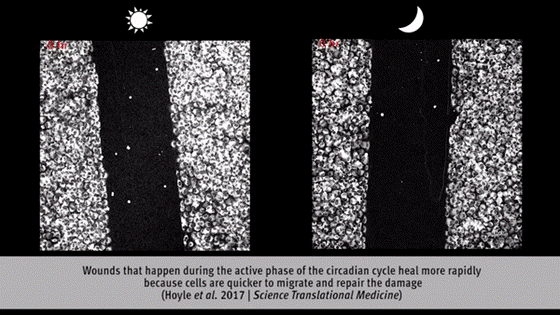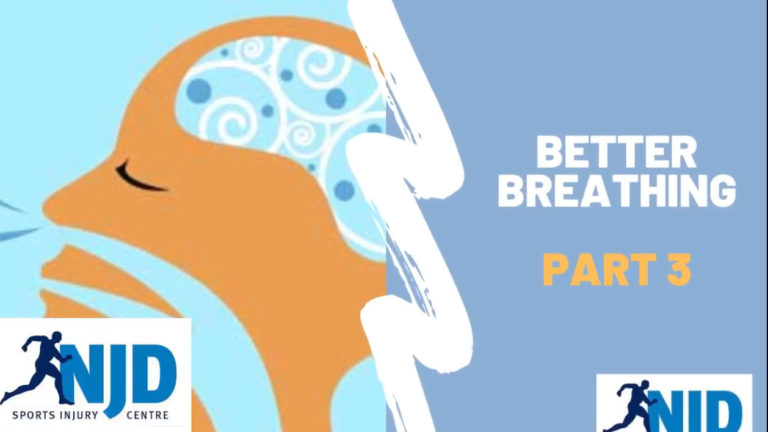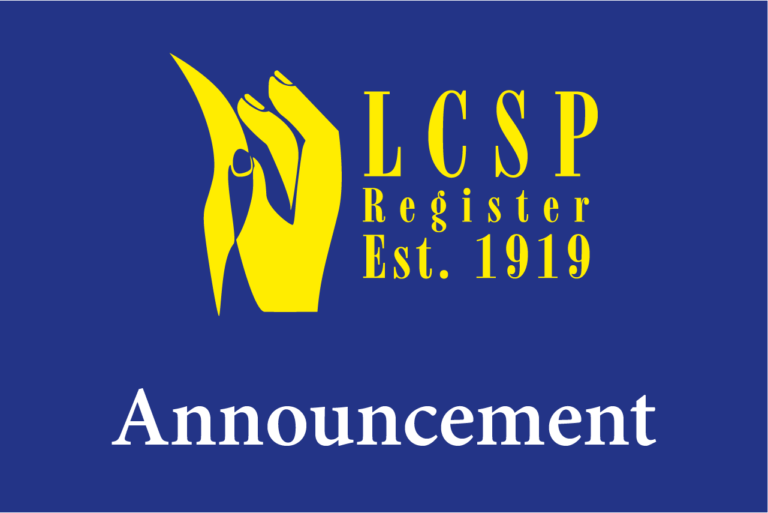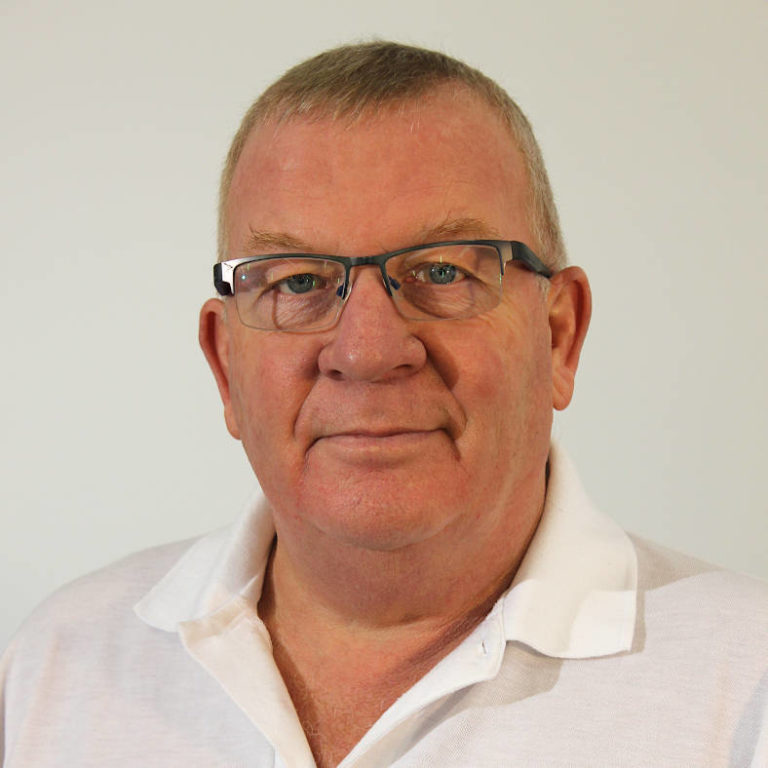The circadian rhythm is a roughly-24-hour cycle in the biochemical, physiological or behavioral processes of living things. Wounds that are received at different points in the circadian cycle heal at different rates, which is thought to be due to the links between circadian clock genes and the behavior of cells implicated in healing.
Interestingly, fibroblasts grown in culture migrate more efficiently over 60 hours of healing sustained during an active part of the cells’ circadian cycle (left) than sustained during a dormant phase (right).
This image shows fibroblasts migrating more speedily during the day, than at night.

Researchers analyzed data from burn clinics around the U.K. and found a similar phenomenon in humans, with burns sustained during daylight hours healing about 60% faster than burns sustained at night. With further study, these findings could influence clinical decisions on treatment, the researchers note, or provide an avenue to use a drug to pharmacologically reset cellular clocks to aid in wound healing.
“Theoretically this will allow us to trick the cells into ‘thinking’ it’s daytime during the night,” says lead author Nathaniel P. Hoyle.
Source: https://cen.acs.org/articles/95/i45/Circadian-rhythm-affects-wound-healing.html






